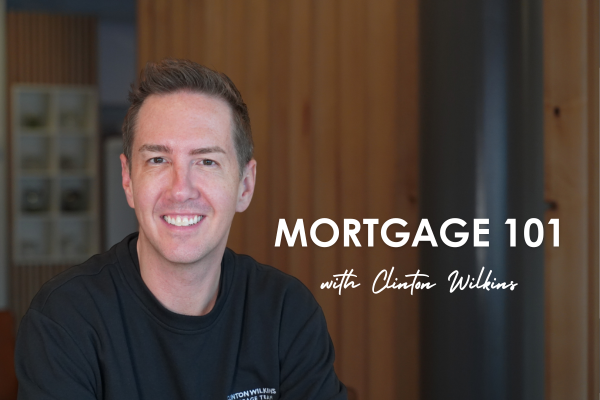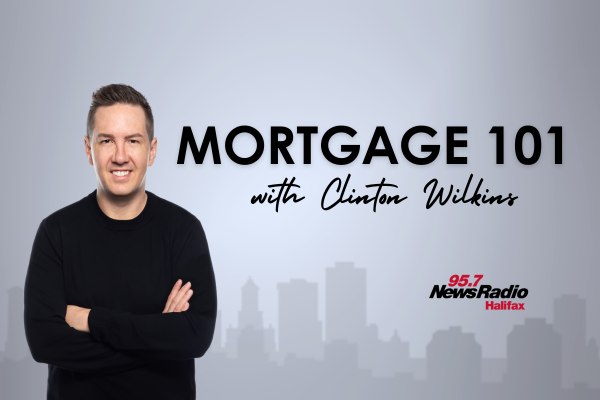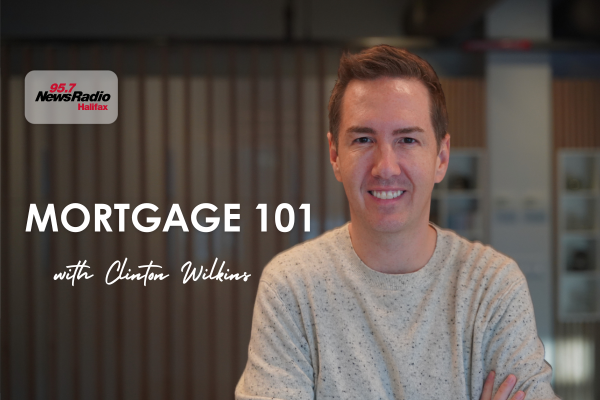Todd Veinotte and Clinton Wilkins bring relator Keith Kenny on to discuss the Halifax real estate market and the importance of accurate listing prices.
Mortgage 101 – Refinance to pay off renovations | August 2021 Part 3
In this episode of Mortgage 101 with Clinton Wilkins and Todd Veinotte, as heard on News 95.7, the guys talk about how you can refinance to pay off renovations, home equity line of credits, prioritizing the right renovations for your home, and how a short-term, variable-rate mortgage can be good for when you’re life is in “flux!”
Mortgage 101 with Clinton Wilkins & Todd Veinotte – August 2021 – Part 3
Don’t feel like watching the video? Check out the transcript below.
Transcript:
Todd Veinotte in the hot seat
Clinton Wilkins: [00:00:00:04] We’re going to talk a little bit about refinances and renovations. You know, it’s certainly a hot topic here in late summer, and we’re going to be going into the fall here before too long and there’s no better time to talk about renovations and really talking about refinance in 2021. You know, certainly it’s a great time to talk about, refinancing. The values are up and the interest rates are down.
Todd Veinotte: [00:00:25:08] Let me give you a real world example of somebody who may be in line for something here,
Clinton Wilkins: [00:00:33:12] Okay.
Todd Veinotte: [00:00:34:06] This person may be me.
Clinton Wilkins: [00:00:35:12] Okay! Tell me! Tell me about your situation. We are here.
Todd Veinotte: [00:00:38:25] So I’m going to sit down. Do you have a coffee for me?
Clinton Wilkins: [00:00:40:22] Yeah, sure. Or maybe like a glass of wine or an espresso or you never know. Maybe even a sparkling water. We’re down here at 5151 George.
Todd Veinotte: [00:00:49:17] Because I’m the client right now and I am actually client so it works.
Clinton Wilkins: [00:00:53:26] It really works.
Refinance to pay off renovations
Todd Veinotte: [00:00:54:20] All right. So my place in Spryfield, when I bought the place, I bought it at rock bottom.
Clinton Wilkins: [00:01:00:01] You got a bargain. I will agree.
Todd Veinotte: [00:01:01:20] I got a real bargain, okay. Now, that bargain needed some work. I put quite a bit of work into that place. I’ve done a lot of it myself. We talked about this earlier in the show. Which is fine. But in that time, I’ve had to put some money into my line of credit in order to pay for that. So there’s a balance there of, whatever it is. I would like to get that paid off.
Now, I also know that with the work that I put into it, including windows and siding and all types of interior, the house is looking good. And where property values have gone, this fall might be a great time for me to refinance that and get that debt paid off and to utilize some of that equity. What’s your advice to me?
Clinton Wilkins: [00:01:43:14] I think it could be a great solution and not to really breach your confidentiality, but I do know your file and your current mortgage product, you are in a variable. So, you know, now that we’re going to really dive deep into your, you know, whole file, but being in a variable-rate mortgage product is really the easiest when we’re talking about doing a mid-term refinance. And that’s really what you’re talking about doing.
To get out of a variable-rate mortgage early, you’d only pay three months interest. And in your situation, we could refinance up to 80 per cent of the market value of your home, less your existing mortgage balance. So we can just do a little bit of quick math there. You know, when we’re talking about refinance, we really look at three things. We look at your income, we look at your assets, and we look at your credit.
And now, you know, over the last year, obviously, your income has changed. And I think it’s really just going to be dependent on really what does the income look like? You know, is income going to be salaried or is your income going to be really self-employed? I don’t know yet. And I think that would be one of the first questions that I would ask you or really any borrower who comes in to see us.
And, you know, there’s more and more borrowers who are becoming self-employed every day. And there’s certainly some great solutions for self-employed borrowers. And sometimes it does come at a higher rate for a year or for two years. But sometimes that’s something that you’re willing to do just to, you know, get that refinance done. And I don’t know. But I think it’s certainly worth a conversation. And I think that it’s just about putting all those pieces together and just figuring out that best solution.
Todd Veinotte: [00:03:19:15] But I think as far as the equity goes,
Clinton Wilkins: [00:03:21:19] The equity is a no brainer.
Todd Veinotte: [00:03:22:22] It’s a no brainer.
Protect your future by setting up big financial transactions right
Clinton Wilkins: [00:03:23:09] The equity is a no brainer. And likely, you can access more equity in your home than you even need. Probably. I’m going to guess. But that’s certainly a, you know, kind of another conversation. It’s like do you do more renovations or do you pull out more funds for potentially doing some investments? I don’t know. But I think it’s a good conversation when you’re doing something like this as a big financial transaction, I think it’s about getting it set up the right way.
You know, you don’t want to do this today, that in another two or three years be like, “oh, no, I want to refinance again,” because certainly sometimes there comes with some costs, Todd. Like when we’re talking about having a penalty of three months interest. That is a pill that sometimes you need to swallow to get to where you want to be.
Todd Veinotte: [00:04:08:24] So for the sake of another $10,000, you can do those windows or whatever, just get it all done.
Clinton Wilkins: [00:04:14:08] Just get it done. And maybe it makes sense to do a product that’s maybe like a mortgage and a home equity line of credit as a combination, because maybe you don’t need those funds today. But maybe you can financially afford to have a mortgage up to 80 per cent of the property value, but maybe it’s split into a couple of different components. You know, there’s lots of ways to slice it. And I think it’s just really figure out what the best solution is for you and your household.
Home equity line of credit
And, you know, it’s not always black and white. You know, it’s kind of like 50 shades of grey. But I think that anytime that you’re going to do a transaction like this, I think it’s important to really ask those right questions. And sometimes people come in to see me and, you know, they have tons and tons equity in their property, but they want to refinance for like $30,000. Like, okay, let’s do it, but maybe it makes sense to also have a home equity line of credit, that if you do want to, you know, have access to some funds down the road, we don’t necessarily need to go through this process again.
And I have no problem doing refinances for people. You know, we get paid. Don’t get me wrong, but we also want to make sure you’re in the best possible product, because I think it’s relationship.
Clinton Wilkins: [00:05:25:17] And, you know, if it is a mortgage and, you know, a line of credit component, we’re still going to get involved when that mortgage comes up for renewal because maybe it makes sense to combine those two products into one product and then maybe we’re going to do another refinance. And we’re certainly looking at those situations a lot, Todd. And I’m not going to throw any lenders under the bus, but there are certainly some lenders that are very heavily driven towards line of credit products, and they’re not for everyone. And in some cases, it’s a forever plan.
And the rate on a home equity line of credit, for most lenders, is somewhere around three per cent. You know, prime plus 50. So we’re looking at 2.95. Some are, 3.05. Kind of just depends on what type of product that you have. But the same product in a mortgage component, you know, if you were in a variable and if you had an amortization of less than 25 years, you could have a variable-rate at 1.40. So the difference between your payment on a 25 year amortization at 1.40 per cent and your interest only payment at three per cent is pretty marginal.
Clinton Wilkins: [00:06:28:00] But the difference really, is how much goes on your principal, because you’re paying that much less interest. And the difference of what you’re saving, you know, in that interest carrying cost is going to pay down that principal, which really pays a lot of borrowers dividends down the road, and it would allow people like you, Todd, to have the equity in their home to, you know, potentially access that down the road when you want to do another major project or maybe you want to sell this house down the road and, you know, buy another house, maybe with a spouse down the road, I don’t know.
Short-term, variable-rate mortgages can be good for when life is in “flux”
Everybody’s situation changes, but likely, I know you, and we’ve been doing the show for three years. If we do do a refinance for you in the future, it would likely be another variable-rate mortgage product or short-term mortgage product for like a one year term or something like that.
Because, you know, anytime your life is in flux in terms of maybe relationships, employment, you know, credit stuff, usually we will do a more flexible term, because if we need to do something, then we have the option. And you’re not going to be in a product. We’re going to pay a big penalty to then make a change.
Todd Veinotte: [00:07:36:00] So you say you know me, and then you went on with the flux, marriage problems, job issues.
Clinton Wilkins: [00:07:42:27] I’m not saying that you have any of these things. I’m just throwing them out there!
Todd Veinotte: [00:07:46:09] Or maybe all of them.
Clinton Wilkins: [00:07:47:21] Or like, maybe it’s all. But you know what? Everyone, has some something going on. Everybody. Nobody’s life is just like 100 per cent peachy all the time. I mean, my life’s not 100 per cent peachy all the time either. And you know, we’ve all had challenges, whether it’s relationships, whether it’s employment.
We’ve all had challenges from time to time. So don’t get me wrong. But, you know, I think it’s just figuring out what the solution is going to be and then just working through it and making a good strategy and a good plan. And I think that’s sometimes half the battle, to be honest.
Bad renovations will reduce the value of your home
Todd Veinotte: [00:08:26:04] Ok, so renovations clearly isn’t the answer for everybody, though right?
Clinton Wilkins: [00:08:29:20] It certainly is not, because let me tell you, I’ve seen some handyman specials and I’m like, you should have a cease and desist, because really, you’ve wasted your money. And in some cases, you’ve actually devalued the property by the work that you’ve done, you’ve maybe caused more problems. So I really think it’s about seeking that advice of someone who’s, you know, an expert in that field.
And I don’t want to pretend to be an expert about renovations. I’m not. I’m an expert at mortgage finance. You know, and I might be slightly handy. I’ve owned some rental properties in the past. But you know what? I’m really handy at writing a friggin check. And you know what? I am the first one to say, you know what, I’d rather pay someone to do that and I want it done right. And it’s not about nickel and diming, getting the cheapest deal.
You know, I’m okay to spend good money to get a quality product at the end. I don’t want to spend frivolously, you know, more money. Nobody wants to do that. I don’t think. I don’t have money to burn, but I’m willing to certainly spend money to get it done and get it done right.
Todd Veinotte: [00:09:32:17] Are you surprised sometimes when what people select as to what they prioritize what they do tackle like a granite countertops. Meanwhile, their roof needs to be done and windows are leaking, do you see that?
Clinton Wilkins: [00:09:46:21] I see that all the time. And sometimes, you know, really you need to focus on the envelope of your home and when we’re talking about the envelope, it’s really about the roof, the siding, the windows, maybe could be the foundation are really, really important things. That really needs to be solid before you start getting into the cosmetics.
Prioritize the right renovations
You may see your kitchen, your bathroom every day, but if your roof is leaking, why are you putting money into the kitchen? But you know what? Sometimes it’s hard to convince people, you know, they really need to do kind of those major things first.
And you may not see the major things and the major things may not have a huge spike to your property value or return on that investment, but it’s going to keep your investments safe. And I think that’s really important.
Todd Veinotte: [00:10:31:21] So how often do you have to convince people perhaps to rethink?
Clinton Wilkins: [00:10:35:24] Well, we certainly, you know, we talk about even purchase plus improvements. And I know it’s a little bit of a segue from renovations, but, you know, it’s still getting worked on in your home.
And, you know, we certainly get quotes for clients who want to do purchase plus improvements and sometimes, they’re declined to do them. Because sometimes the improvements don’t add value to the home and the lender or the insurer doesn’t support, you know, the work that they’re going to do. And sometimes have to break that news to, you know, the borrowers that, you know, they need to make a different decision.
Todd Veinotte: [00:11:10:04] Excellent stuff, good conversation. We’ve got another segment to go here on News 95.7. We’re going to talk about immigration, is that correct?
Clinton Wilkins: [00:11:16:06] That’s right.
Todd Veinotte: [00:11:16:16] Want to get to it. Okay, we’re going to get to that News 95.7 Mortgage 101: Your Guide to Homeownership, Clinton Wilkins and myself Todd Veinotte. We’ll be back.
If you have any questions, get in touch with us at Clinton Wilkins Mortgage Team! You can call us at (902) 482-2770 or contact us here.


